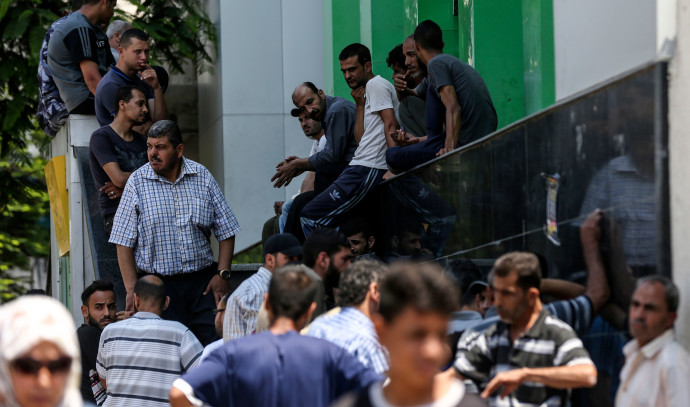A new World Bank report states that the corona plague continues to severely hit the Palestinian economy, which is already faltering, resulting in a contraction in gross domestic product of 11.5 percent in 2020, one of the most severe declines recorded. Under the economic crisis, under-supply in the health system and uncertainty Regarding the immunization system, the report calls for coordination between the Palestinian Authority and Israel and the world in order to eradicate the epidemic and enable necessary health services.
The World Bank’s new economic monitoring report will be presented to the ad hoc liaison committee (AHLC) during a political meeting to develop assistance to the Palestinian people (virtual meeting) to be held tomorrow. The report highlights critical challenges facing the Palestinian economy and outlines the impact of the virus on health And the policy steps adopted so far.
Even before the corona crisis began, the outlook for the Palestinian economy was bleak with low growth levels, persistent financial deficits, high unemployment rates and rising poverty. The situation worsened with the combined effects of the epidemic and the cessation of the transfer of tax money that Israel collects for the PA, which led to one of the sharp contractions in economic activity.
According to the report, the Palestinian economy is in a very difficult situation due to the global health and economic crisis, after suffering three closure periods in March, July and November 2020, severe economic slowdown, and a political crisis with Israel that delayed the tax transfer for Israel for six months. November 2020).
- 2021 Elections: All the polls, articles and interpretations of leading reporters on the Maariv website
As a result, Palestinian GDP in 2020 is expected to decline by 11.5%. The unemployment rate in the Palestinian territories reached 28.5% at the end of the third quarter of 2020, which includes an unemployment rate of 49% in the Gaza Strip and an unemployment rate of 19% in the West Bank. The poverty rate rose to about 30 percent, with about 1.4 million Palestinians living below the poverty line. The combined impact of the epidemic, a cessation of tax collection revenues and a 20 percent drop in international aid led to a budget gap, after the aid received, of over $ 1 billion – the highest For years.
“The Corona epidemic and its effects have exacerbated the situation of the Palestinian economy, which has been difficult and worrying before. As the epidemic grows longer, the fragile welfare and health systems are burdened, making it even more difficult to deal with the crisis. , Said Kenneth Shenkar, Regional Director of the World Bank in the West Bank and Gaza.
The Palestinian Authority plans to vaccinate 20% of its residents with vaccines provided to it free of charge under the international program COVAX, backed by the World Health Organization. The Palestinian Ministry of Health plans to purchase additional vaccines to vaccinate 60% of the population, at a total cost of about $ 55 million, of which there is a gap of $ 30 million. To date, the authority has received less than 20,000 vaccine doses. While Israel leads the world in terms of vaccines per capita, the Israeli Ministry of Health has not formulated an allocation strategy to support the territories, beyond the 5,000 vaccines that have been transferred to vaccinate health care workers.
Among the report’s recommendations is to improve coordination between the PA and Israel to eradicate the epidemic and manage the vaccine system, and reduce the challenges of border control to enable the purchase of life-saving medical equipment. This coordination is critical while the PA formulates its vaccination deployment plans. An emergency center for public health to centralize data management and informed decision-making processes that will serve as an effective coordination body with all partners. Due to a significant loss in revenue, donors can help eradicate health challenges through increased investments to help with the epidemic while ensuring the continuity of vital health services and the introduction of vaccines.
